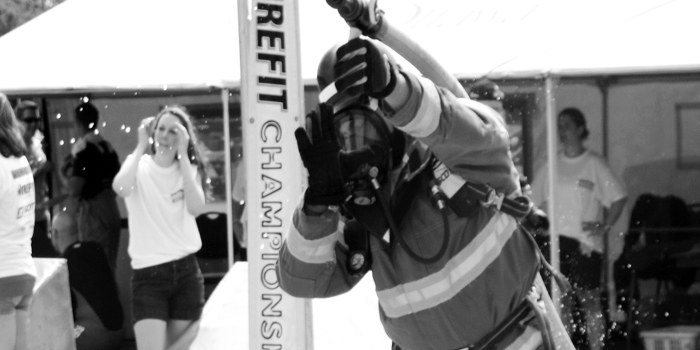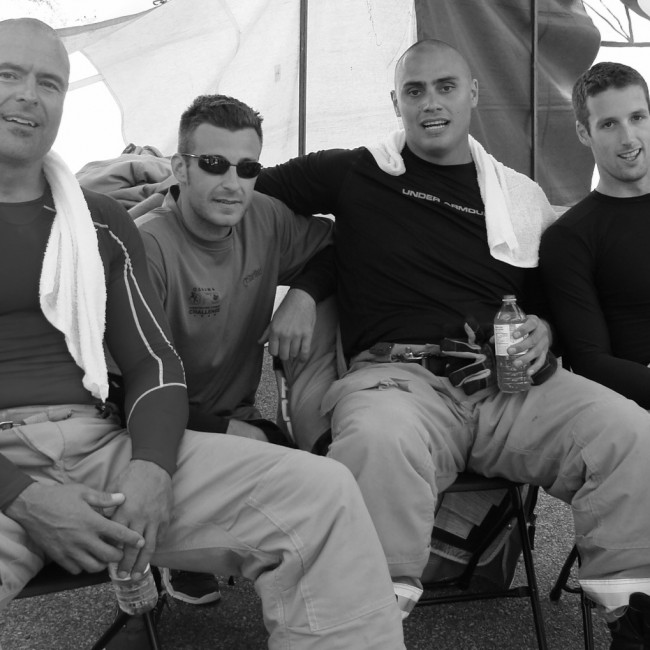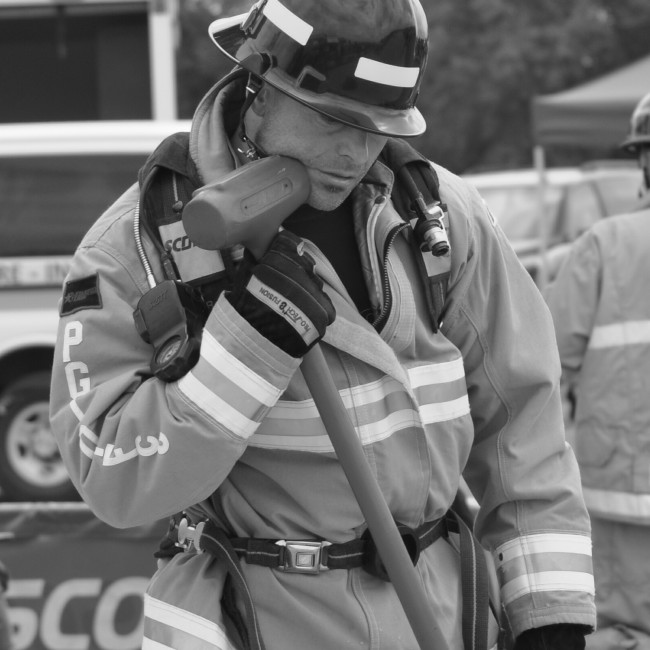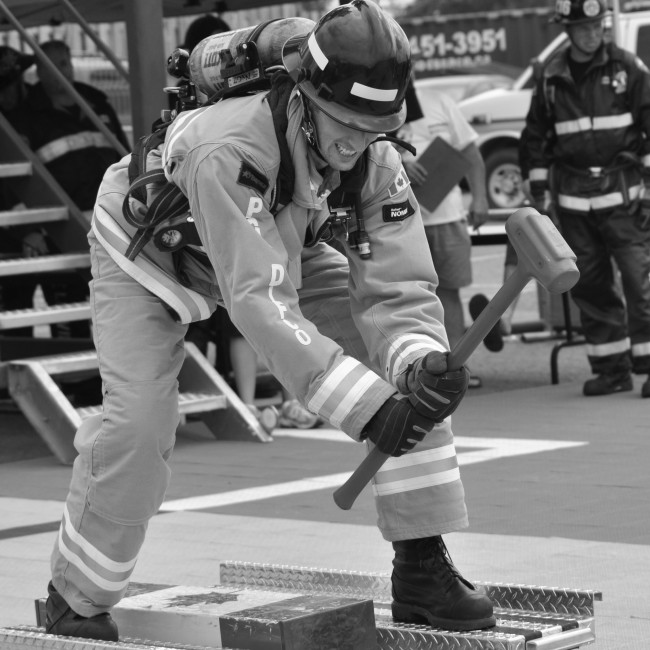
Despite my history in Kettlebell Sport and Powerlifting, I like to take on fitness challenges that are different than anything I've tried before. My profession as a Firefighter and Rescue Technician with Oshawa Fire has given me several opportunities to experience these kinds of challenges, but there's one in particular I haven't shared with you yet: The Firefit Combat Challenge.
The Firefit Combat Challenge is a timed event for Firefighters consisting of a grueling obstacle course that includes seven disciplines of firefighting set up consecutively in a course that is timed. The course is difficult to complete on it’s own and competitors must wear full bunker gear including gloves, helmets, boots and a full self contained breathing apparatus (SCBA), all which are National Fire Protection Association (NFPA) approved. While performing this event, competitors wear equipment that could be worn in a structural fire.
The Course
The course consists of carrying a 45-pound hose bundle up three flights of stairs, pulling a 40-pound hose roll up to the top of the three story structure, descending the structure hitting each step on the descent, striking a Kaiser machine with a sledge hammer, running through a series of hydrants, pulling a charged hose line 75 feet to hit a target with a smooth bore nozzle, and pulling a 175-pound dummy backwards 100 fee to the finish line.
You can compete in the Combat Challenge events as an individual or you can participate in a team relay with three to five people on each team. There is also an NXG-2 event which is an event with a two person tandem, each running half the course and includes an air bottle exchange from the first team member to the second team member.
This event challenges your anaerobic capacity, fitness level, strength, speed, and overall conditioning.
To excel in the sport, you must increase your VO2 max, strength, speed, and anaerobic capacity as well as eliminate any weaknesses in each transition of the course. Any mistake made during the course can add precious seconds to your time.
To train for the Combat Challenge requires a variety of disciplines that incorporate strength, explosiveness, work capacity and skill training. Depending on how close you are to competing during the race season, the majority of strength training is done off-season and skill training increased the as the race season approaches. While training for our most recent even, our team from Oshawa Fire utilized a simple upper body push/pull and lower body push/pull program using compound movements to work as many muscle groups as possible in the most efficient manner. We used a four-day split with one heavy day and one light day for both upper and lower body movements as the main frame for our training. Our basic template looked like this:
Monday: Heavy Squats/Barbell Rows/Pull-ups & Weighted Dips
Tuesday: Light Deadlifts/Light Military Press
Wednesday: Rest Day
Thursday: Light Squats/Barbell Rows/Pull-ups & Dips
Friday: Heavy Deadlifts/Heavy Military Press

As it started to get closer to race season, we began to implement more explosive movements into our training for example super-setting box jumps immediately after squatting. To increase our work capacity and endurance we implemented Tabata sprints (20 seconds on/10 seconds off for eight rounds) on the treadmill and progressively added speed and incline as race season approached.
The most difficult part of training for combat is finding a way to incorporate skill training to resemble the actual racecourse. A couple of local departments within driving distance had actual replica towers to run and occasionally we could train with these departments. The majority of the time, though, we would utilize a parking garage to run stairs with hose bundles and try to improve foot speed followed by dragging a 175-pound dummy up a incline grade for 100 feet.
As race season approached we progressively add more gear, bunker pants, jackets, helmets and finally an SCBA. To improve on the rope pull segment of the course we went to our training tower and did hose-pull evolutions to improve shoulder strength, timing, and technique. One of the hardest portions of the course is to pull the 175-pound dummy for the full 100 feet when you're almost completely exhausted and your legs and lungs are screaming and your are struggling to find each step.
Initially we used heavy backward sled drags, which worked the proper muscles and improved footwork, but it was difficult to replicate the exhaustion factor of running the course first. Everyone had huge improvements in their race times when we started to incorporate squats prior to backward sled drags. We would take a squat bar with rubber bumpers, perform 12 to 15 squats to pre-fatigue and exhaust our legs prior to heavy backward sled drags. This was a big factor for our training without having to run a full course to simulate exhaustion and we could do several revolutions at a time.
In 2011 I won silver at the Canadian Nationals in Medicine Hat Alberta. I implemented this training for 2012, shaved over four seconds off my time, and won Gold at the Nationals in Baie Comeau Quebec. Winning Gold confirmed that this training was effective for improving my competition times in the Combat Challenge.
They call the Firefit Combat Challenge the “Toughest Two Minutes in Sports,” and if you ever get an opportunity to give it a try, I predict you would be first inline to agree. This sport is challenging, grueling but very rewarding. I believe I was in the best “overall” physical condition I’ve ever been in training for Combat. If this is the kind of fitness you're interested in, give this kind of training routine a shot.













5 Comments